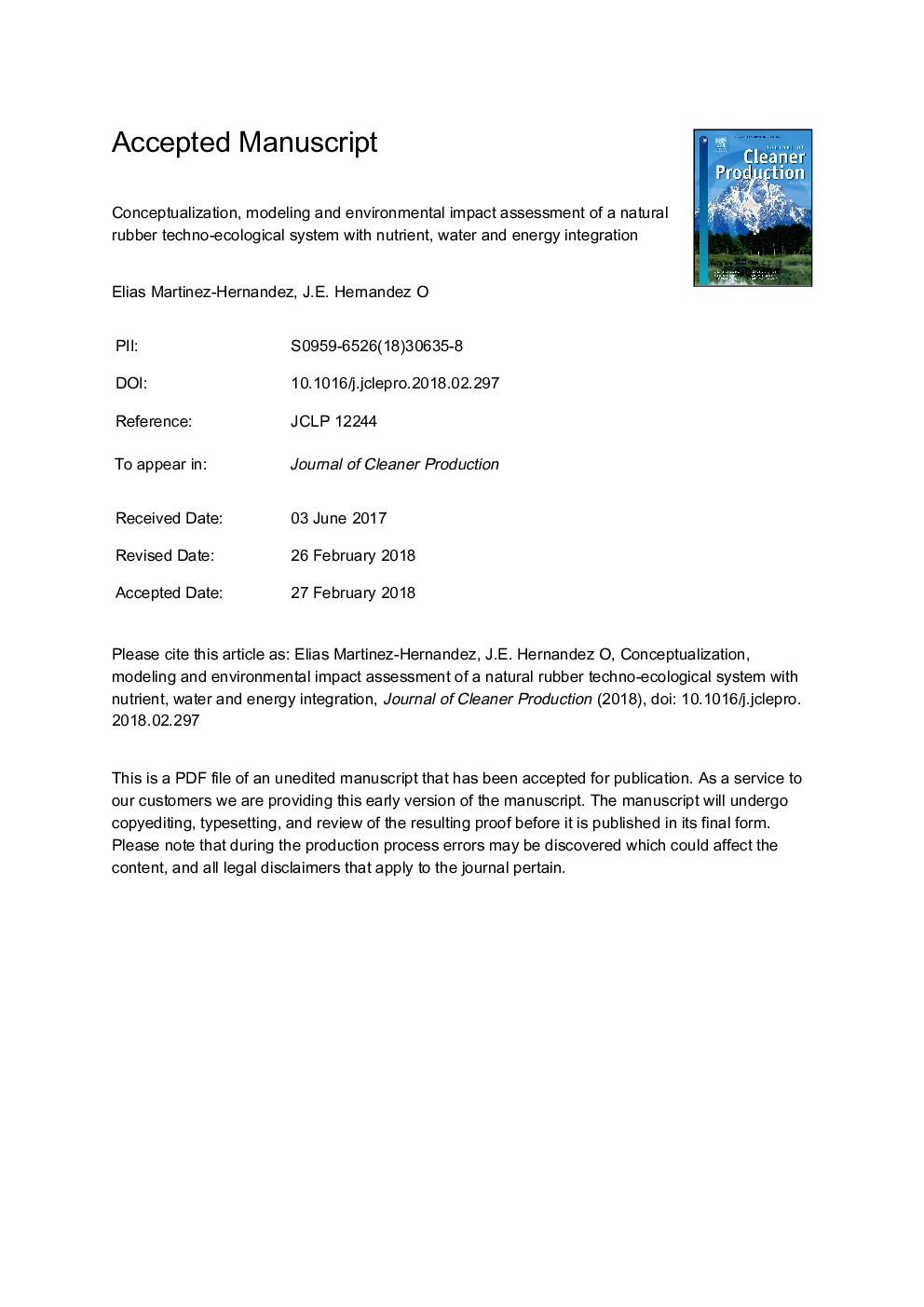| کد مقاله | کد نشریه | سال انتشار | مقاله انگلیسی | نسخه تمام متن |
|---|---|---|---|---|
| 8096548 | 1522068 | 2018 | 41 صفحه PDF | دانلود رایگان |
عنوان انگلیسی مقاله ISI
Conceptualization, modeling and environmental impact assessment of a natural rubber techno-ecological system with nutrient, water and energy integration
ترجمه فارسی عنوان
مفهوم سازی، مدل سازی و ارزیابی اثرات زیست محیطی یک سیستم تکنولوژیکی طبیعی لاستیک طبیعی با یکپارچگی مواد غذایی، آب و انرژی
دانلود مقاله + سفارش ترجمه
دانلود مقاله ISI انگلیسی
رایگان برای ایرانیان
کلمات کلیدی
سیستم تکنولوژیکی محیطی، طراحی پایدار، لاستیک طبیعی، مدل سازی اکوسیستم،
موضوعات مرتبط
مهندسی و علوم پایه
مهندسی انرژی
انرژی های تجدید پذیر، توسعه پایدار و محیط زیست
چکیده انگلیسی
Simultaneous consideration of ecological and technological processes could be a systematic approach to cleaner crop production systems that preserve ecosystem states and services. Herein, we conceptualized a techno-ecological integration between a rubber plantation and latex processing. We applied a two-component framework to describe and model the resulting techno-ecological interactions to analyze the potential benefits in latex productivity and carbon capture as ecosystem services. The ecological component includes: processes in the rubber plantation affecting carbon, nitrogen, water, biomass, and latex production. The technological component includes: latex concentration process; effluent treatment and anaerobic digestion (AD) to recover water, nutrients and energy. The main synergistic interaction was through the recycling of nutrients, which allowed maintaining nutrient availability for tree growth and increase latex yield. Water recovered was recycled within the technological component to save 85% of freshwater for latex processing. Water for irrigation came from external sources. The resulting system potentially enhances carbon capture and latex production by 16% and 62%, respectively, compared to a conventional plantation (no irrigation and fertilization only in the establishment stage). In addition, our LCA based environmental assessment showed that the major global warming (GWP), acidification (AP) and eutrophication potential (EP) impacts come from nitrogen emissions in the plantation and electricity used for water irrigation and latex processing. The conceptual techno-ecological integration reduced the impacts from fertilizer input, water for processing, water treatment and heat, by 78% of GWP, 64% of AP and 79% of EP, with respect to a non-integrated system. 11.7% of the total nitrogen required throughout the plantation cycle is supplied by chemical fertilizer during establishment stage, but the GWP, EP and AP impacts from this are offset by the 88.3% coming from recycling during the productive stage. Other production systems could benefit from the approach presented herein, showing explicit modeling of interactions, integration and assessment of a techno-ecological system.
ناشر
Database: Elsevier - ScienceDirect (ساینس دایرکت)
Journal: Journal of Cleaner Production - Volume 185, 1 June 2018, Pages 707-722
Journal: Journal of Cleaner Production - Volume 185, 1 June 2018, Pages 707-722
نویسندگان
Elias Martinez-Hernandez, J.E. Hernandez,
